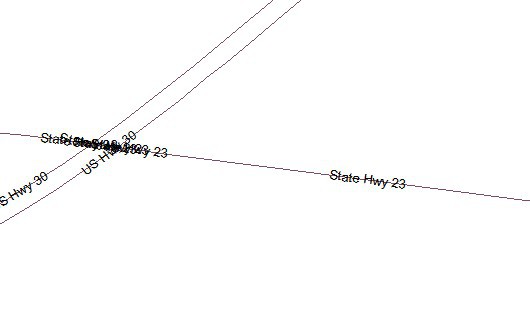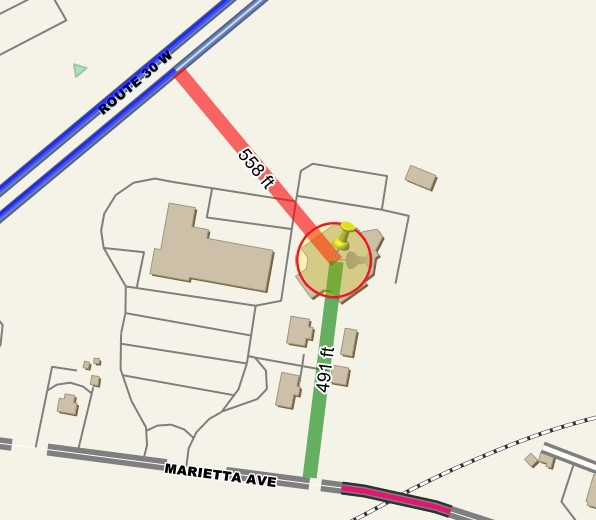Good evening,
In the picture below we are generating a route from the building marked with the pushpin to a point east on Marietta Avenue (to the lower right of the picture's coverage area). Based on measurement lines drawn by our application, it appears that the road closest to the point is not being selected as the starting point and the route is starting on Route 30 W instead of Marietta Avenue, although Marietta Avenue is more than 60 feet closer. Instead of generating a route that should go a few blocks it generates a route that goes out onto a highway, finds a ramp, goes onto the eastbound lane, and comes back onto Marietta Avenue via a road to the north, etc. The bottom picture shows the same area in the routing shapefile. Note that Marietta Avenue is also Route 23.
Any idea what's going on here? The one thing that occurs to me is that the closest point of the road segment to the starting point is not being used, but perhaps some other point of the segment.
Thanks,
Allen


